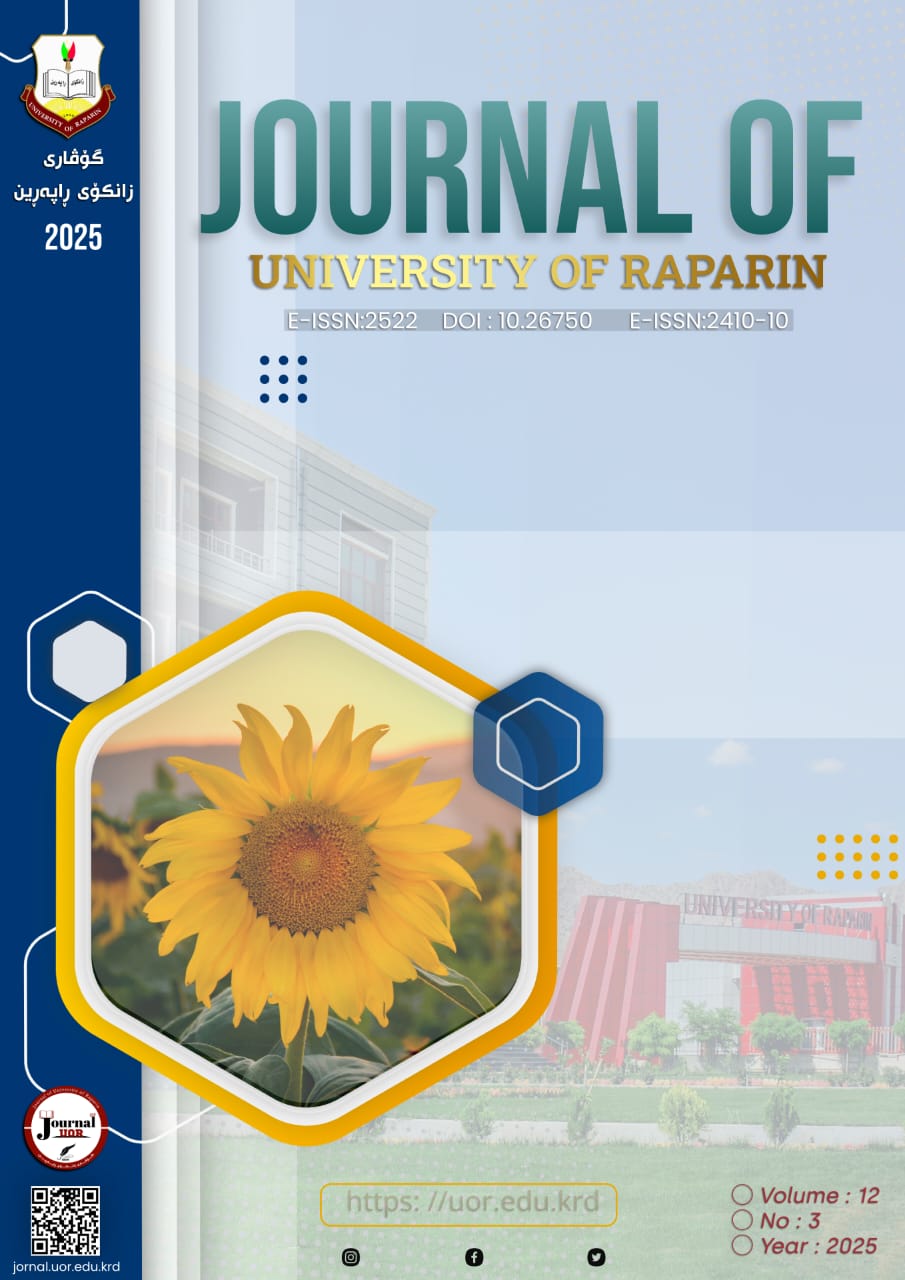The Sixth Parliamentary Election of Kurdistan: Results and Implications
A Study in Political Geography
DOI:
https://doi.org/10.26750/art039.a1396Keywords:
Kurdistan Regional, Election, Electoral Districts, Voter.Abstract
Political geography examines all geographical factors that influence political decisions and changes, including the analysis and distribution of power among parties and lists participating in the electoral process. Parliament is a national institution that plays a vital role in strengthening the political process of the Kurdistan region and ensuring the rights and duties of its inhabitants the sixth term of Kurdistan Parliament represents a major change in the parliament's history regarding the electoral system, reduction in parliamentary seats, distribution of seats across electoral districts, and the reorganization of ethnic minority quotas. The election system changed from a single constituency to a multiple constituency system. Based on Kurdistan Region's provinces, parliamentary seats were divided into four electoral districts (Erbil, Sulaymaniyah, Duhok, and Halabja). The number of parliamentary seats was reduced from 111 to 100, and the ethnic minority quota system was reorganized from 11 seats to 5 seats, distributed across the electoral districts. Since the first parliamentary election, voter turnout has consistently declined, from 87.4% in the first term to 59% in the fifth term - a decrease of 28.4%. However, voter turnout in this sixth parliamentary term increased to 72%, demonstrating Kurdistan Region citizens' renewed trust in this national institution. This is considered an important turning point for the Kurdistan Region, enabling parliament to become a decision-making center and a strong pillar of national security.
References
عزتی، عزهت ألله (2013)،كوردستان له لێكۆڵینهوهیهكی جیۆپۆلیتیكی ئێران و عێراقدا، وهرگێڕانی له فارسیهوه هاوڕێ یاسین محمهدأمین، چاپی یهكهم، چاپخانهی چوارچرا، سلێمانی.
فتح الله، سفین جلال(2017) جوگرافیای ههڵبژاردن، چاپی یهكهم، چاپخانهی چوارچرا، سلێمان.
حمد، سهرههد شێخه(2017) گۆڕانی نهخشهی ههڵبژاردنهكانی پهرلهمانی عێراق لهنێوان ساڵانی (2010-2014) نامهی ماستهر، زانكۆی ڕاپهڕین، كۆلێژی زانسته مرۆڤایهتییهكان، بڵاونهكراوه.
كریم، ئهحمهد رفیق (2019) جوگرافیای ههڵبژاردنی پهرلهمانی ههرێمی كوردستان، تێزی دكتۆرا، زانكۆی سلێمانی كۆلێژی زانسته مرۆڤایهتییهكان، بڵاونهكراوه.
جهوههر، یاسین ئاشور، مهحمود، دڵشاد عهلی، بهرگی (10) ژماره (5)ی مانگی 8ی 2018 ههڵبژاردن وهك خواستێكی دیموكراسی و دهرهاویشتهكانی له ههرێمی كوردستان، خولی سێیهم و چوارهم بهنمونه گۆڤاری زانكۆی گهرمیان VoI.5,NO.4(AUGUST,2018)
مارف، شهماڵ علی و ئهوانیتر، ژماره (60)ی (1ی ئابی 2019) بایهخی گهشتیاری بنهما مێژویی و شوێنهواری و ئاینییهكان له ههورامان بهبهكارهێنانی GISگۆڤاری زانكۆی سلێمانی بهشی B ژماره.
حكومهتی ههرێمی كوردستان، وهزارهتی پلاندانان، دهستهی ئاماری ههرێم، بهشی دانیشتوان و كار 2024 (سایتی www.parliamaent.krd)
سایتی كۆمسیۆن.com.كۆمسیۆنی بالای سهربهخۆی ههڵبژاردنهكانی عێراقwww. ڕێكەوتی 25/ 10/ 2024
الجبوری، مزهر حميد سعيد، الموقع الجيوستراتيجى لدول أسيا الوسطى، رسالة ماجستير، كلية التربية، جامعة الموصل، غير المنشورة، 2012
وهزارة التخطيط هيئة أحصاء اقليم كوردستان الاسقاطات السكانية لاقليم كوردستان العراق للفترة (2009-2020)، قسم السكان والقوى العاملة، 2024
الجمهورية العراق، المفوضية العليا المستقلة اللانتخابات، النتائج النهائیه، لانتخابات برلمان أقلیم كوردستان، العراق،30/10/ 2024
الجمهورية العراق، المفوضية العليا المستقلة اللانتخابات، ملخص انتشار مراكز الاقتراح للانتخابات برلمان كوردستان، 2024.
Downloads
Published
Issue
Section
License
Copyright (c) 2025 Journal of University of Raparin

This work is licensed under a Creative Commons Attribution-NonCommercial-NoDerivatives 4.0 International License.




